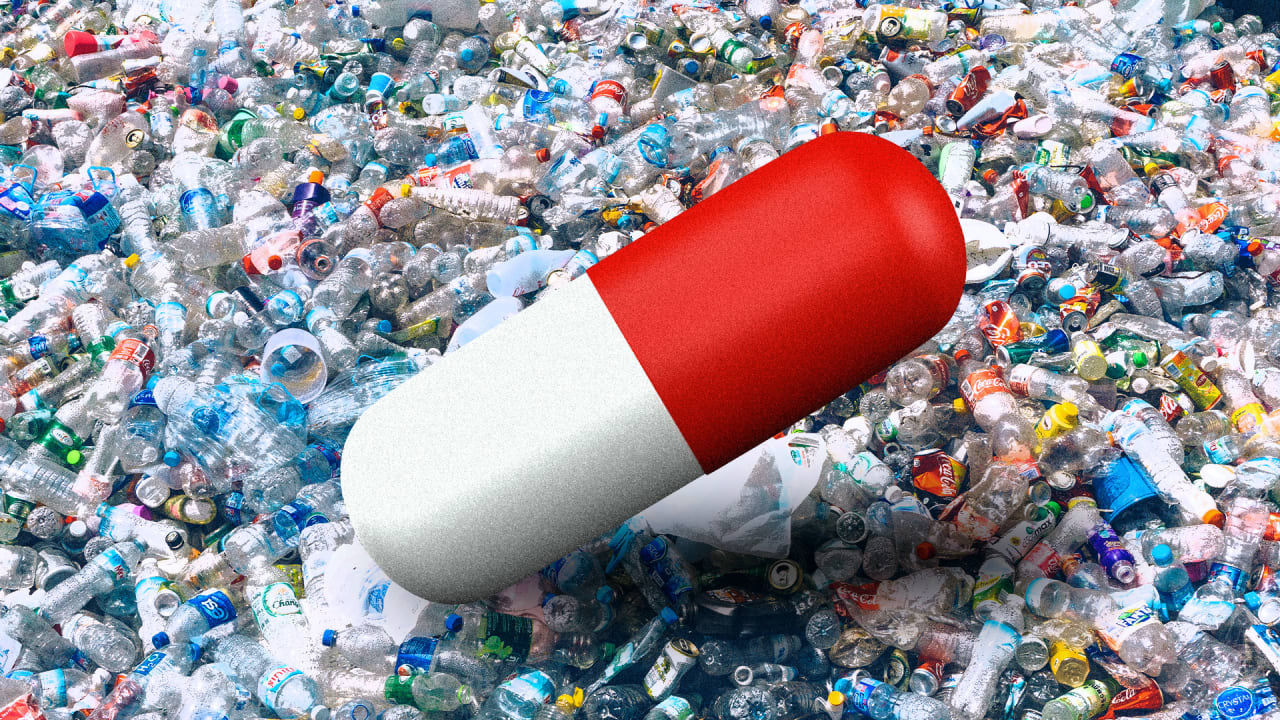Your food is full of microplastics—and now we know why

A study published this week delves into the mystery of how the plastic objects we interact with daily shed tiny particles that creep into our bodies, brains and guts.
While the scientific focus has long been on how microplastics pollute our environment and impact wildlife, researchers are increasingly raising alarms about how the same contaminants can wreak havoc in the human body.
The new research, published in the journal NPJ Science of Food, wove together data from 100 previous papers that studied microplastics, nanoplastics and plastic particles. The results were compiled into an open database published by the Food Packaging Forum, a Swiss nonprofit that examines chemicals in food packaging.
Microplastics and nanoplastics are plastic particles in the millimeter to nanometer range, with the latter causing even more concern among scientists because their tiny size makes them able to slip into human cells.
“This is the first systematic evidence map to investigate the role of the normal and intended use of food contact articles in the contamination of foodstuffs with MNPs [microplastics and nanoplastics],” lead author of and Scientific Communication Officer at the Food Packaging Forum Dr. Lisa Zimmermann said. “Food contact articles are a relevant source of MNPs in foodstuffs; however, their contribution to human MNP exposure is underappreciated.”
How we interact with plastic matters
The new study looked at a broad range of “food contact articles” that included water bottles, cutting boards, food processing equipment and packaging ranging from food wrappers to tea bags. Most food packaging contains plastic, even many things that seem like they don’t, like the paper that wraps around cold cuts and cheese, cardboard takeout containers and glass bottles and jars, which often have a plastic-coated closure.
The authors focused on how everyday objects used as intended can shed microplastics and how that shedding can worsen over the course of repeated interactions. Across 14 different studies, microplastic shedding was found to increase with repeated uses, including screwing a reusable water bottle lid on and off, washing a melamine dish or putting plastic tableware into contact with hot foods
“These findings are relevant for reused plastic [food contact articles] and should be considered when assessing the safety of FCAs across use cycles,” the authors wrote. Based on their research, and its blind spots, they stressed the need for future studies to delve more deeply into how repeated interactions, heating and washing affects how much microplastic is shed by kitchenware and food packaging that most of the world’s population might come into contact with countless times each day.
The authors also found that the bulk of the research on microplastics focused on only a few kinds of objects that come into contact with food and drinks, like water bottles and tea bags. Similarly, more studies focused on PET and polypropylene over other common plastics, leaving a lot of unknowns about how much plastic is being shed by food packaging made out of other materials.
Food and beverage containers can expose the human body to microplastics every time we interact with them but relatively little is still known about how that process works. That mystery is an ominous one considering how ubiquitous plastics are globally in food packaging and preparation and how their presence is increasingly linked to reproductive, digestive and respiratory problems and potentially even colon and lung cancer.
Plastics appear to have no trouble finding their way into the human body. Another recent study found that the adult brain can contain a plastic spoon’s worth of microplastics and nanoplastics, an amount that’s seven to 30 times higher than what might be found in the liver or kidneys. Those kind of findings show that it’s imperative for future research to track down how all of that plastic is finding its way into the human body and what exactly it does once it gets there.
What's Your Reaction?
 Like
0
Like
0
 Dislike
0
Dislike
0
 Love
0
Love
0
 Funny
0
Funny
0
 Angry
0
Angry
0
 Sad
0
Sad
0
 Wow
0
Wow
0


.jpg?width=1200&auto=webp&trim=0,0,0,0#)
























































































